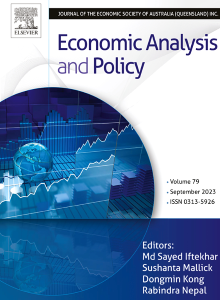The impact of artificial intelligence technology application on total factor productivity in agricultural enterprises: Evidence from China
IF 7.9
2区 经济学
Q1 ECONOMICS
引用次数: 0
Abstract
The agricultural sector exhibits significant differences in production methods, efficiency, and models compared to other industries. The question remains whether the application of artificial intelligence (AI) in agriculture can positively impact total factor productivity (TFP). This study investigates the effect and mechanism of AI application on the TFP of agricultural enterprises, using A-share listed agricultural companies from 2011 to 2022 as the research sample. The findings reveal that AI acts as an “agricultural accelerator” for production efficiency, significantly enhancing the TFP of agricultural enterprises. This conclusion holds even after a series of robustness tests and the use of instrumental variables to address endogeneity. In terms of the impact mechanism, AI promotes TFP improvement in agricultural enterprises by enhancing innovation capacity, optimizing the human capital structure, and reducing costs while increasing efficiency. Additionally, the impact of AI is more pronounced in enterprises whose main business is edible agricultural products, larger-scale operations, private enterprises, and those located in the eastern regions. This study provides theoretical guidance for developing precise AI application plans for agricultural enterprises in China and other developing countries, and offers important policy implications for sustainable agricultural development.
求助全文
约1分钟内获得全文
求助全文
来源期刊

Economic Analysis and Policy
ECONOMICS-
CiteScore
9.80
自引率
9.20%
发文量
231
审稿时长
93 days
期刊介绍:
Economic Analysis and Policy (established 1970) publishes articles from all branches of economics with a particular focus on research, theoretical and applied, which has strong policy relevance. The journal also publishes survey articles and empirical replications on key policy issues. Authors are expected to highlight the main insights in a non-technical introduction and in the conclusion.
 求助内容:
求助内容: 应助结果提醒方式:
应助结果提醒方式:


